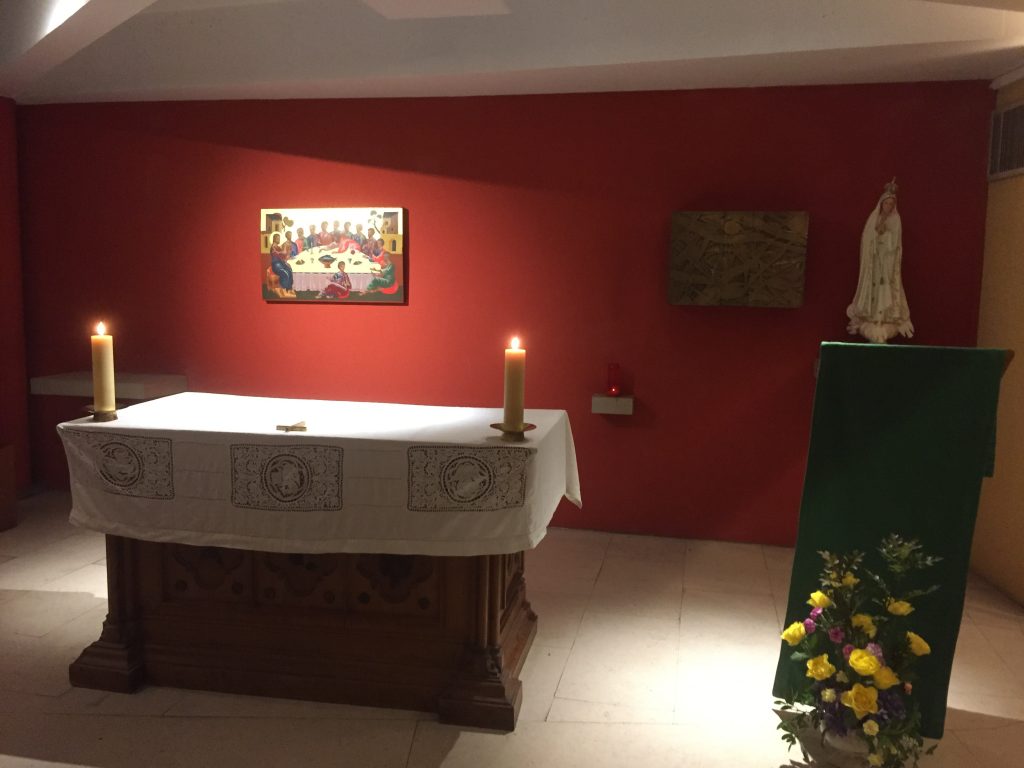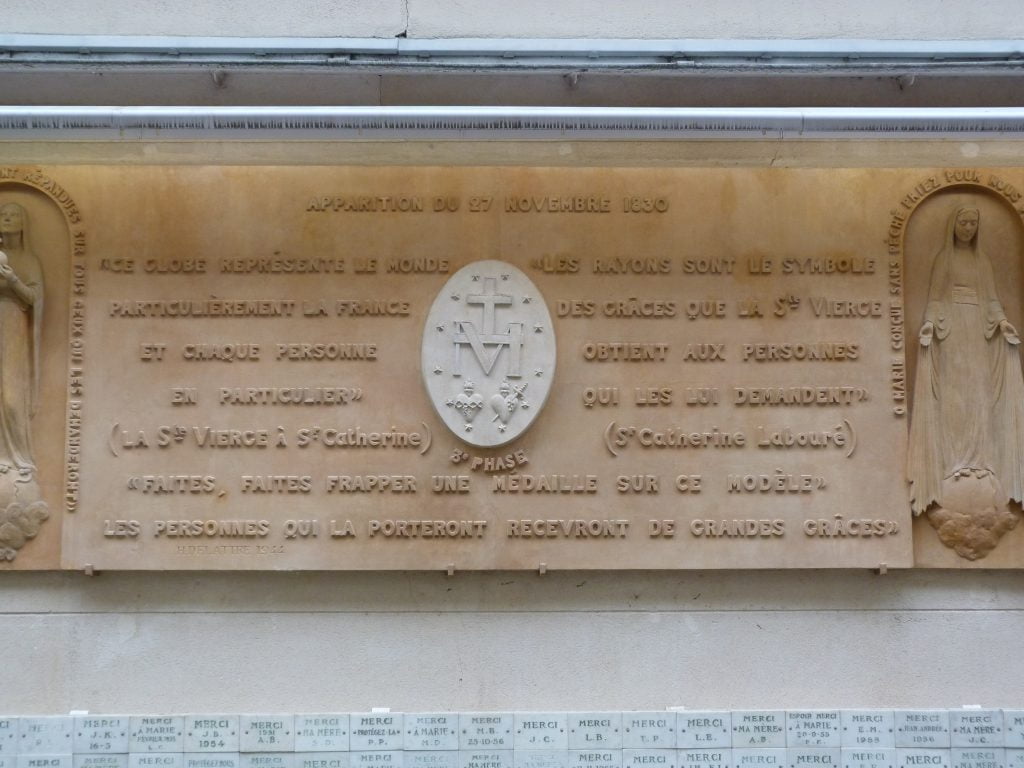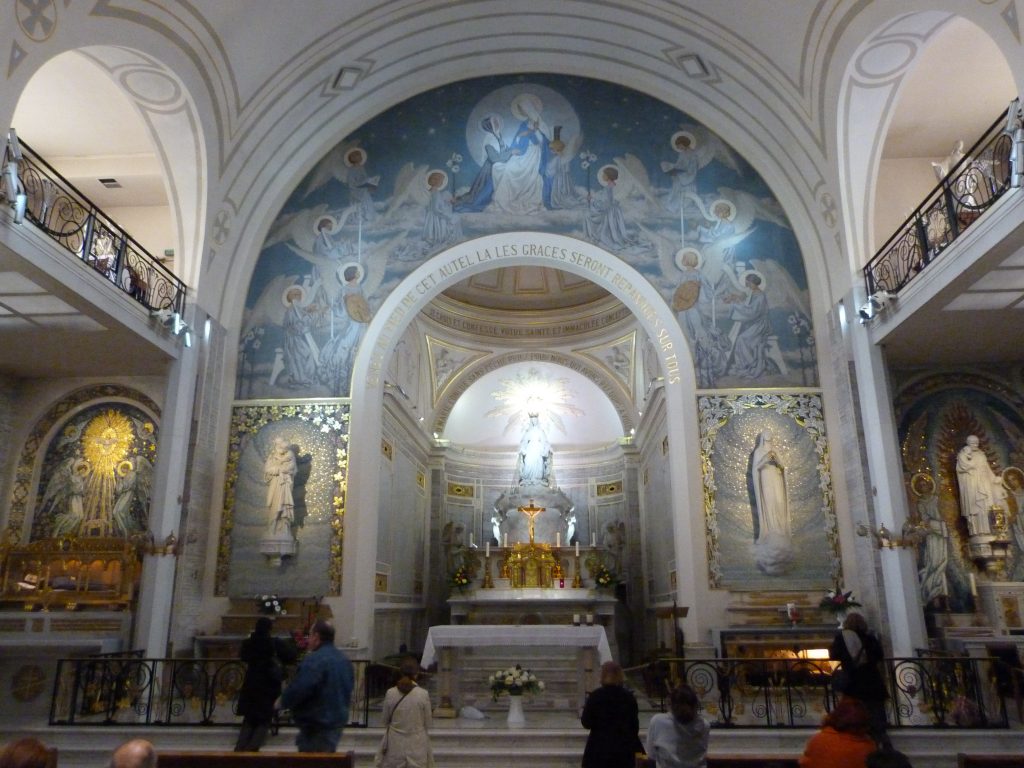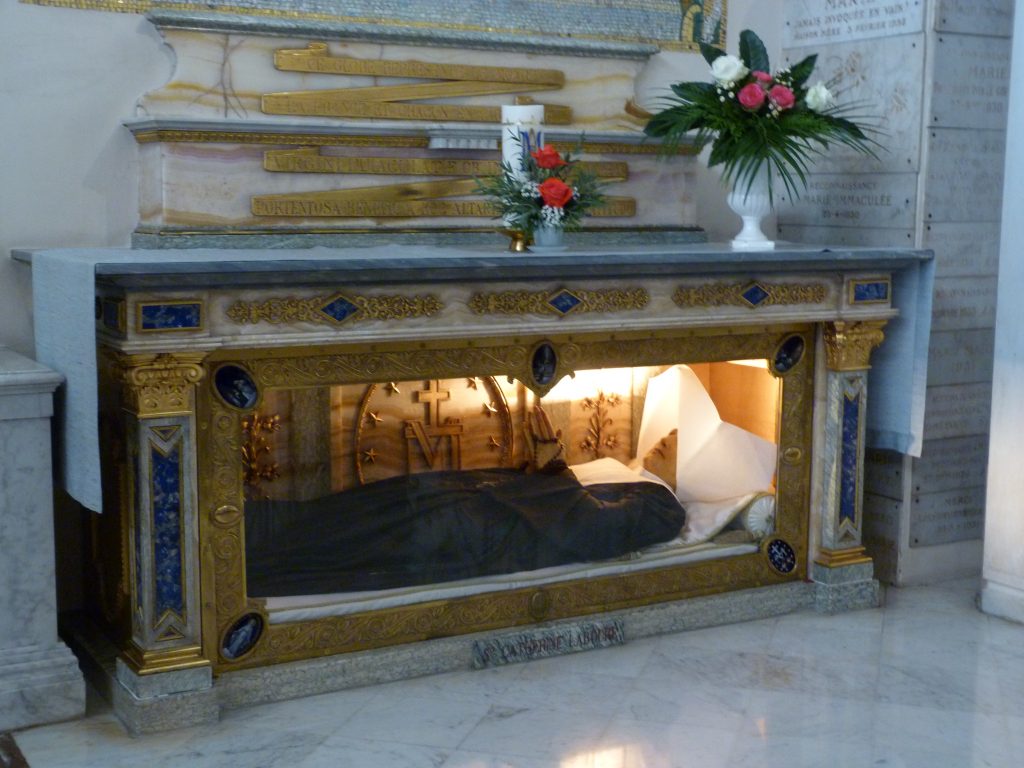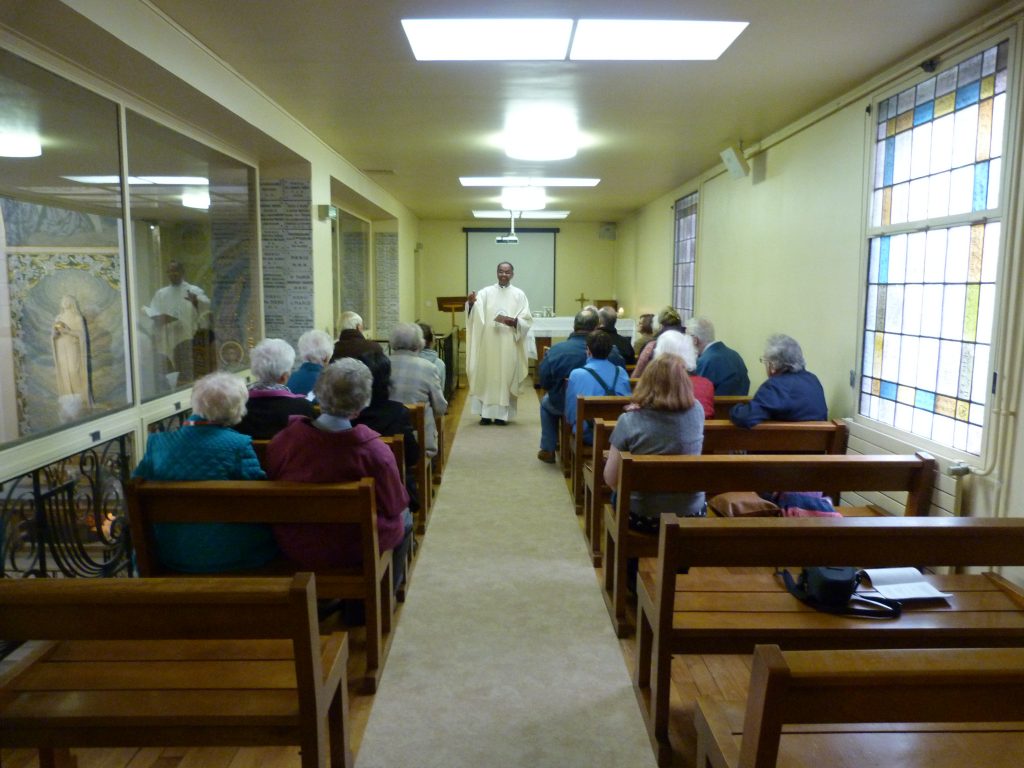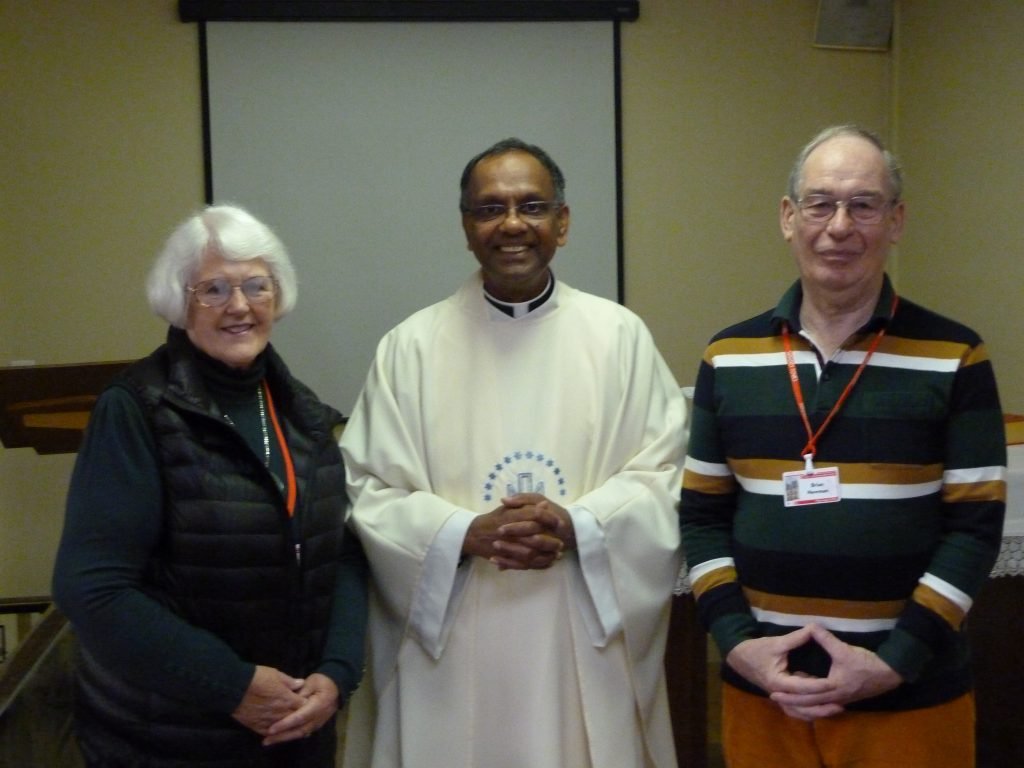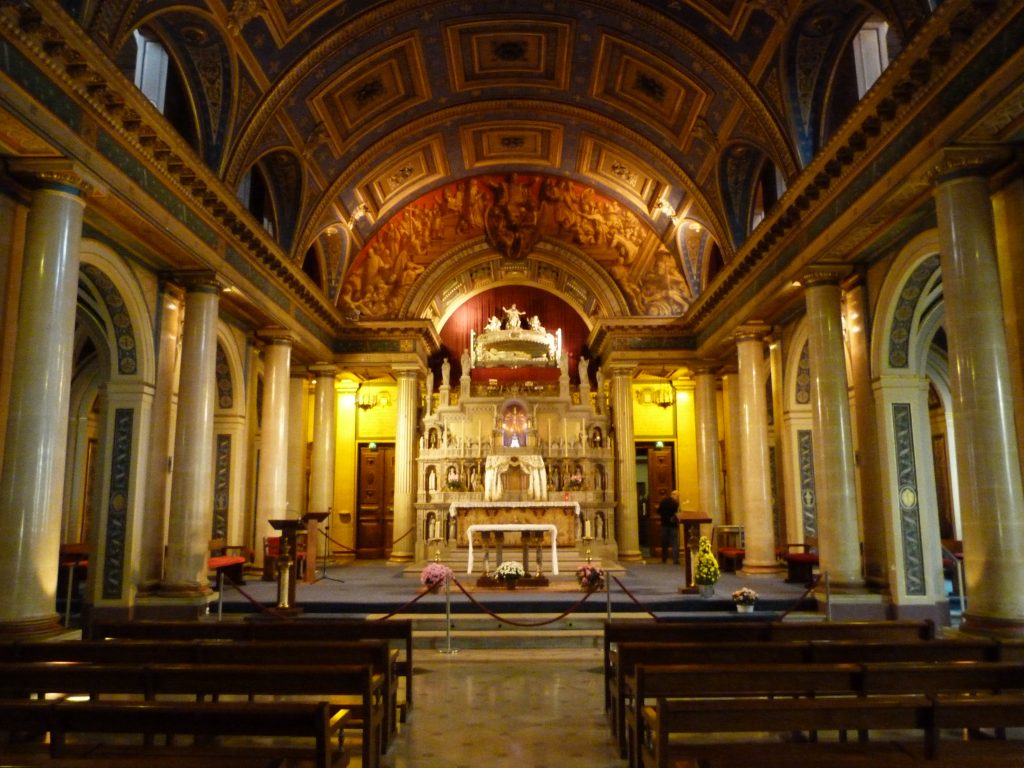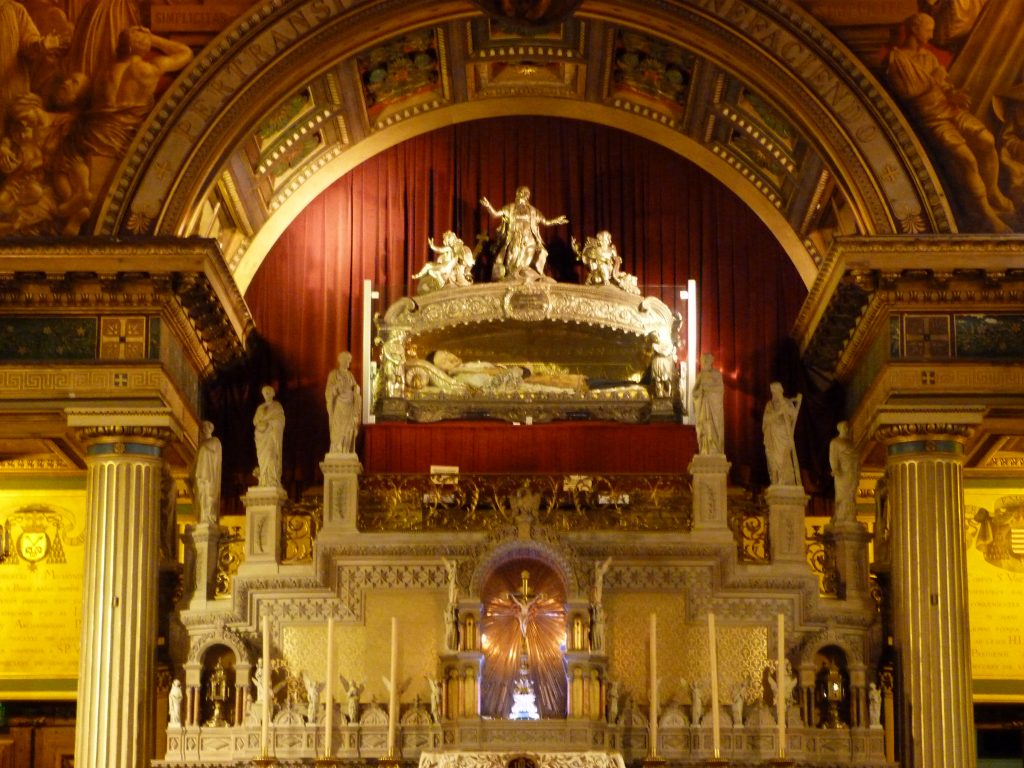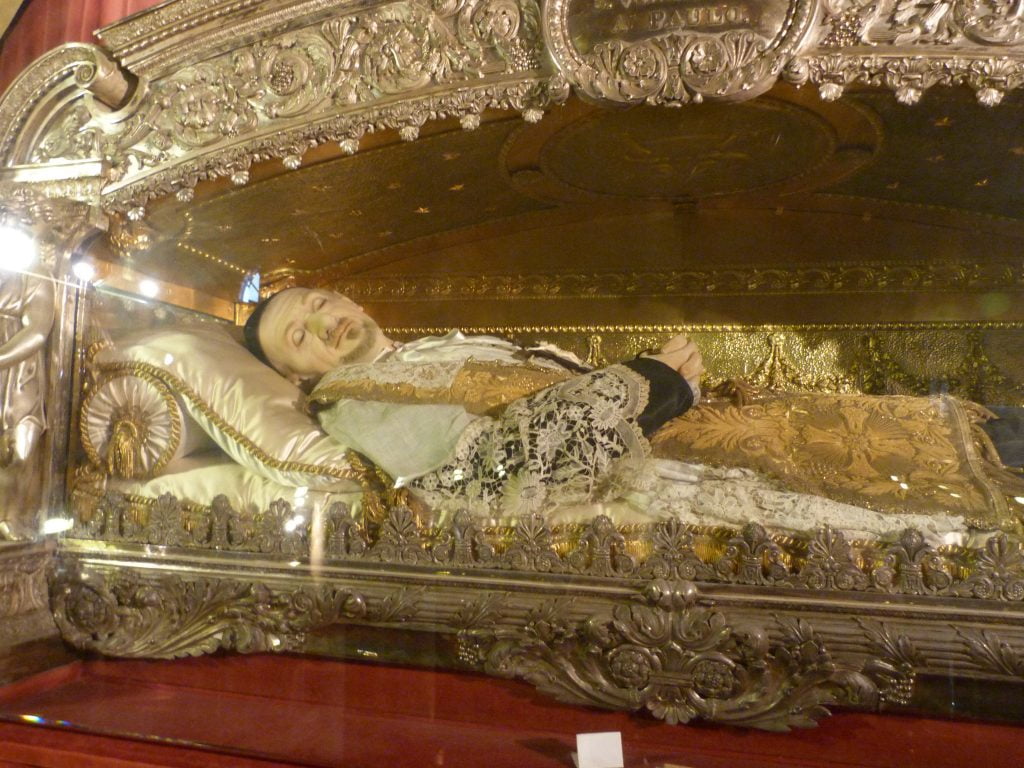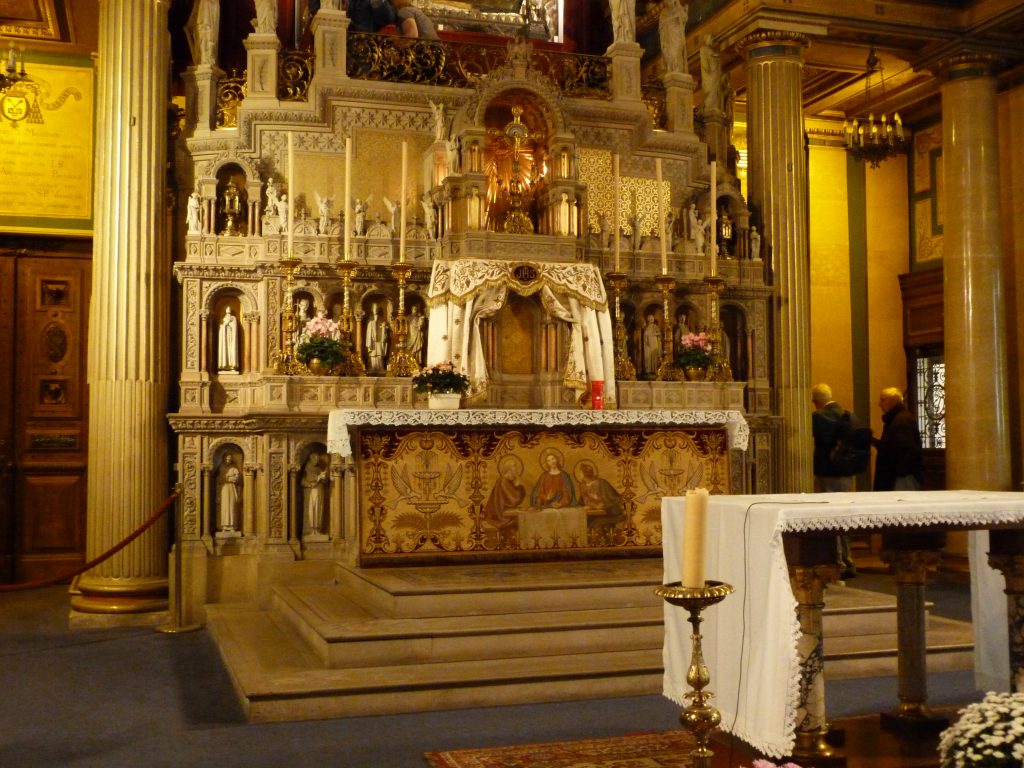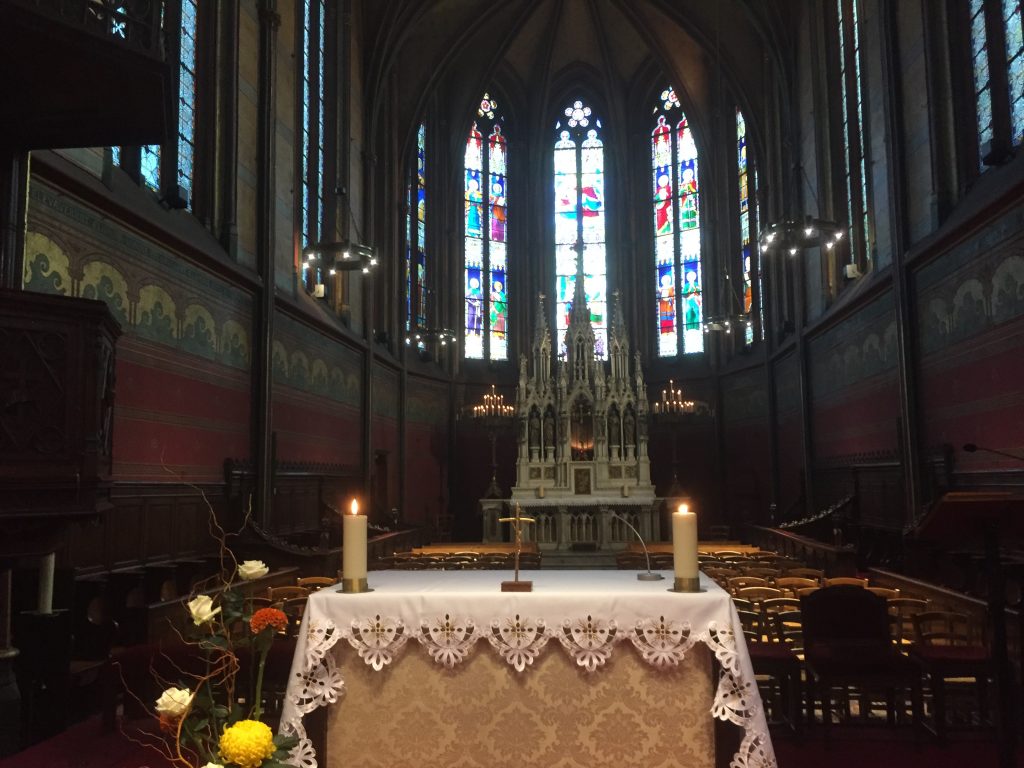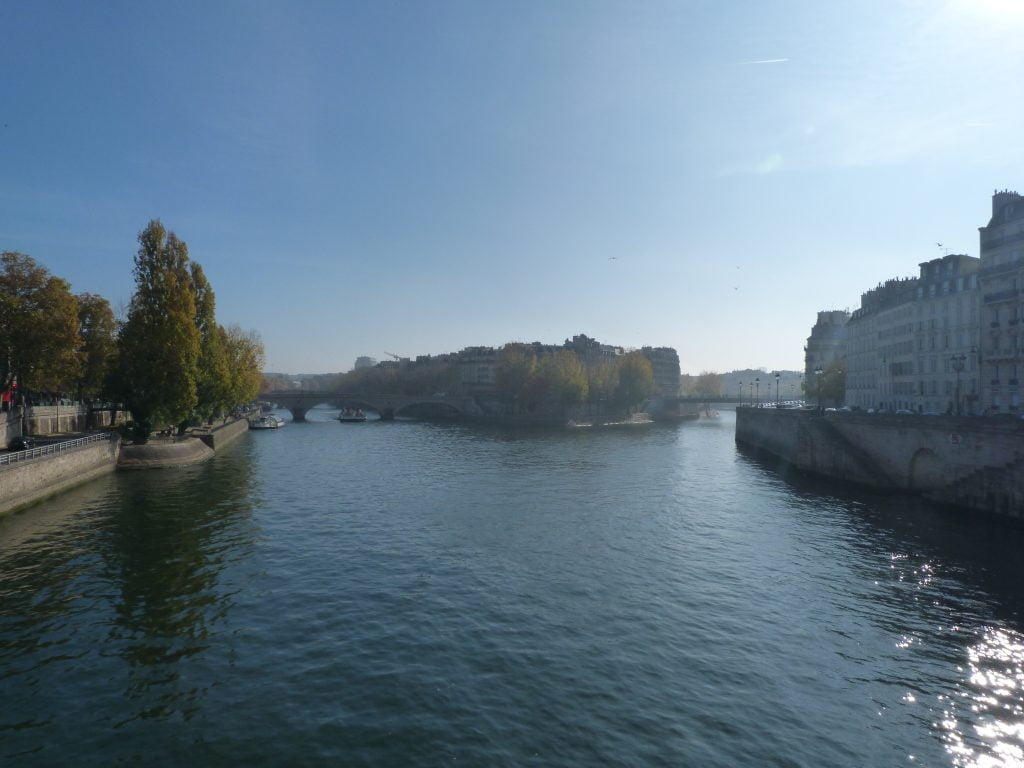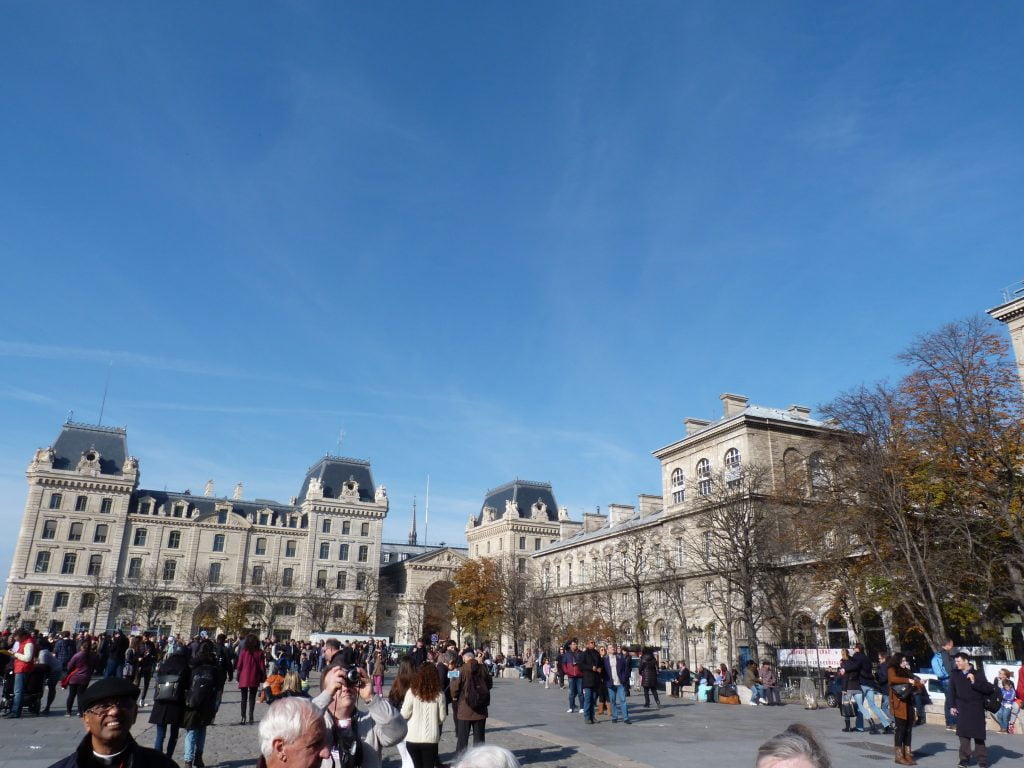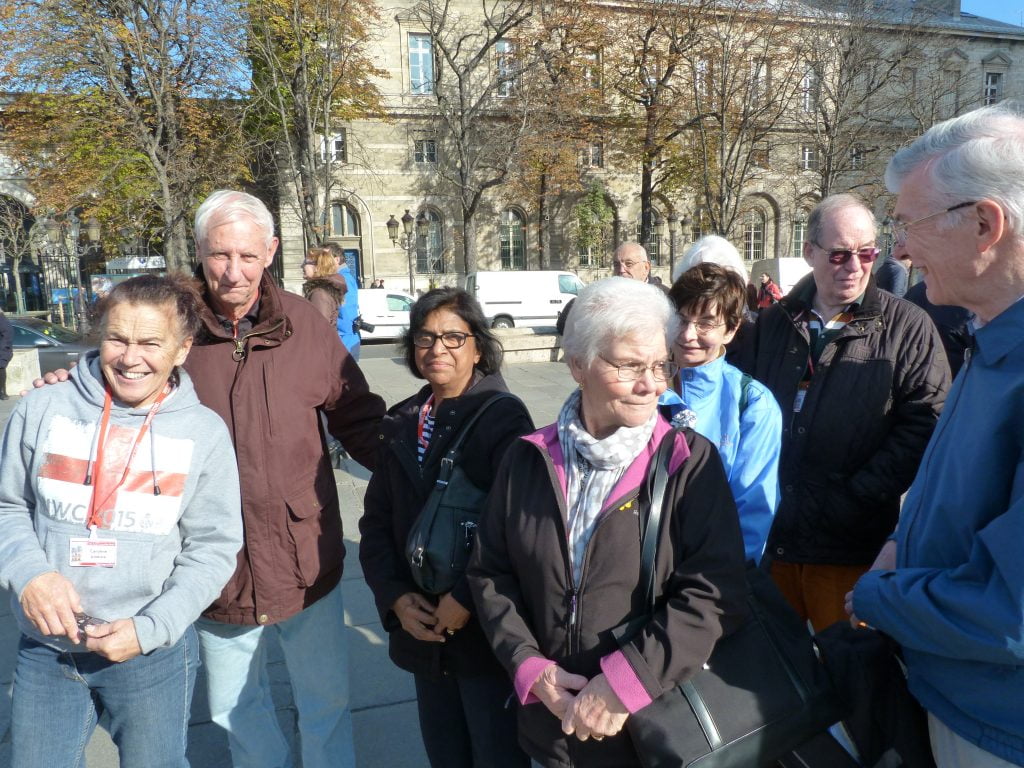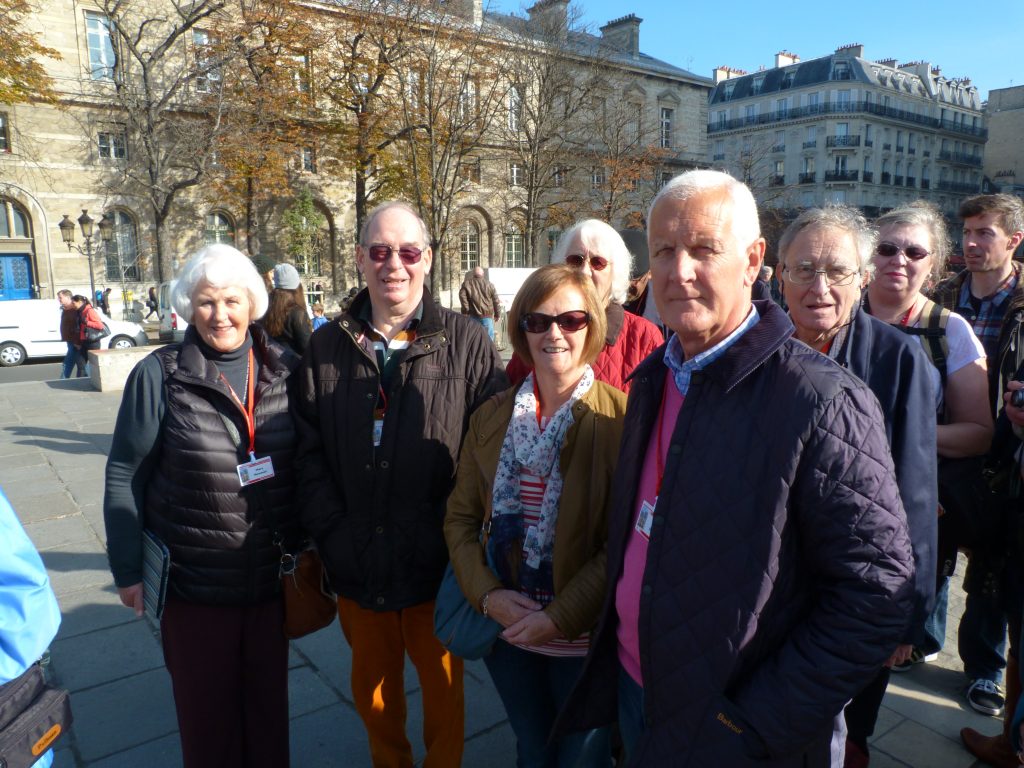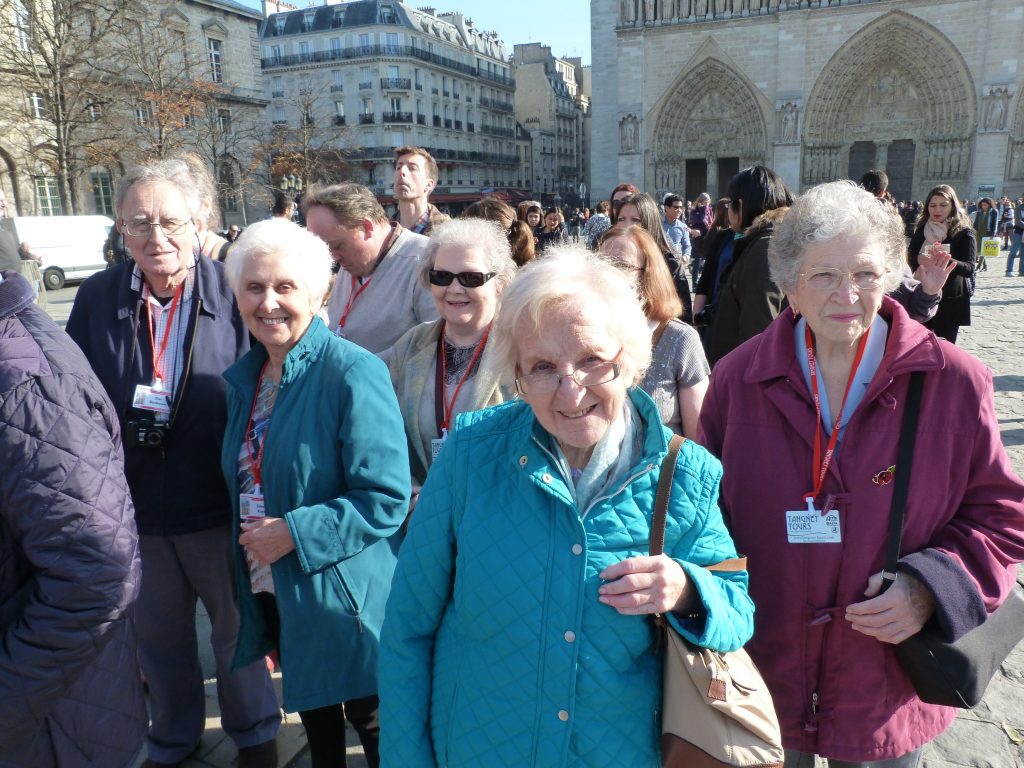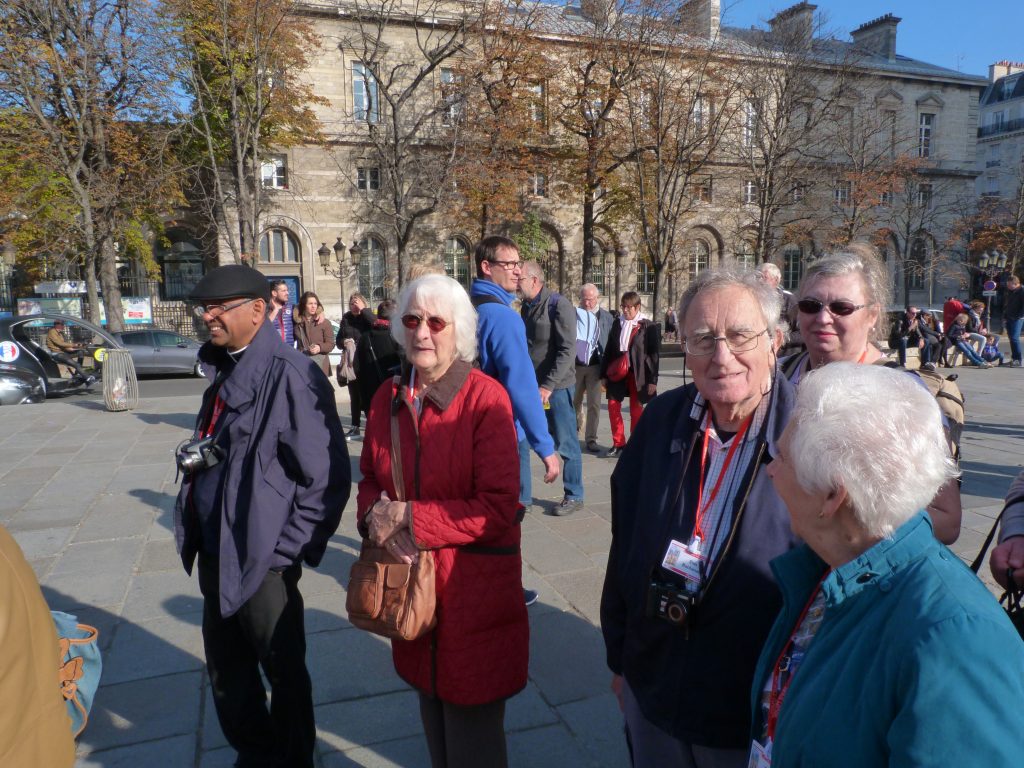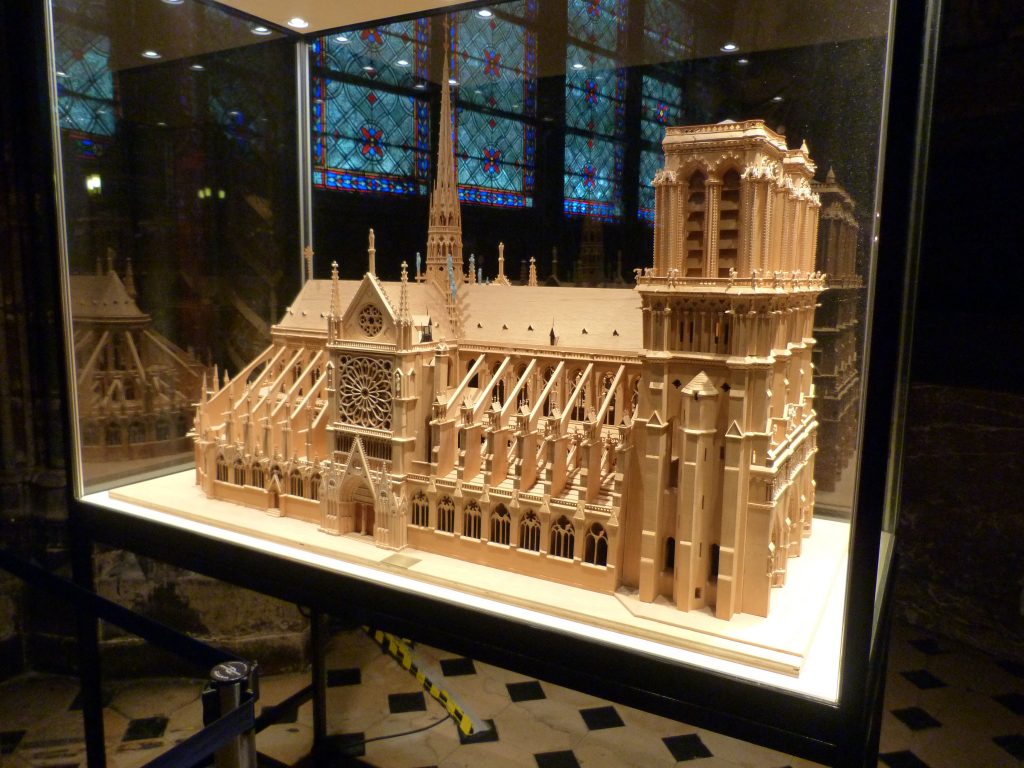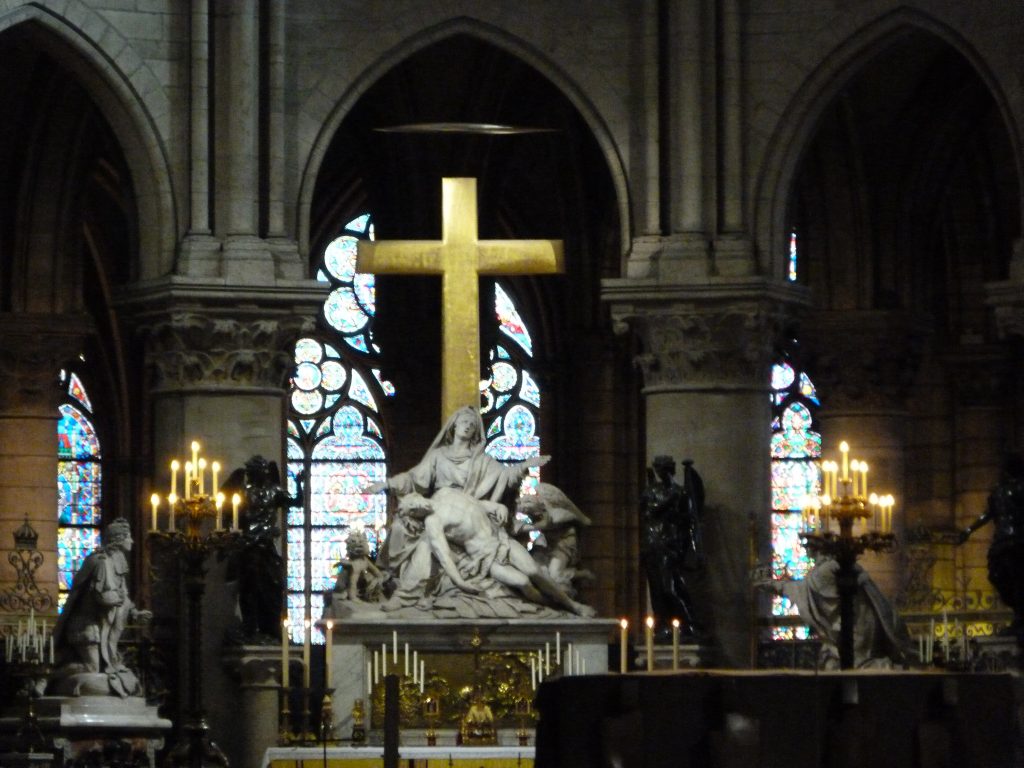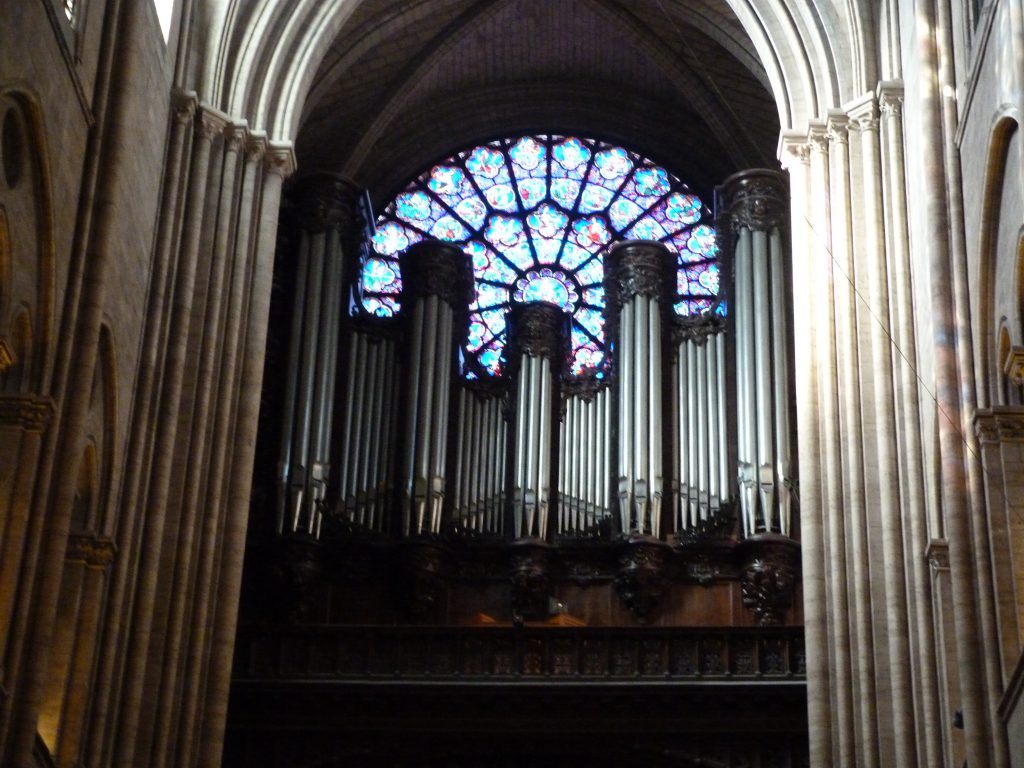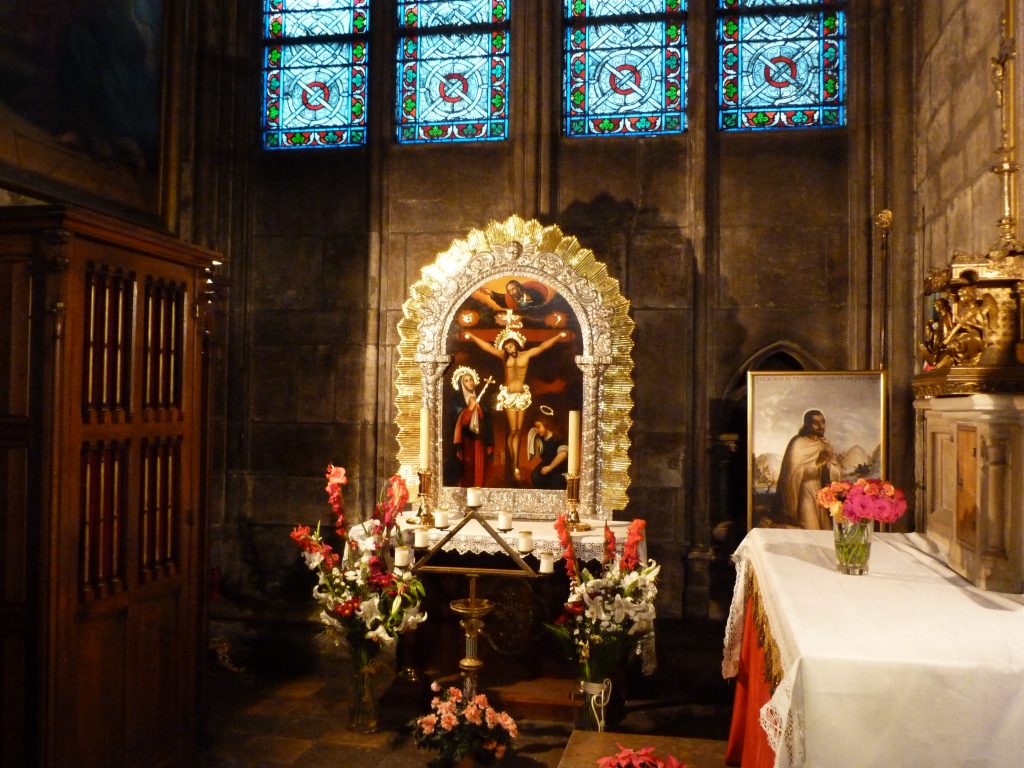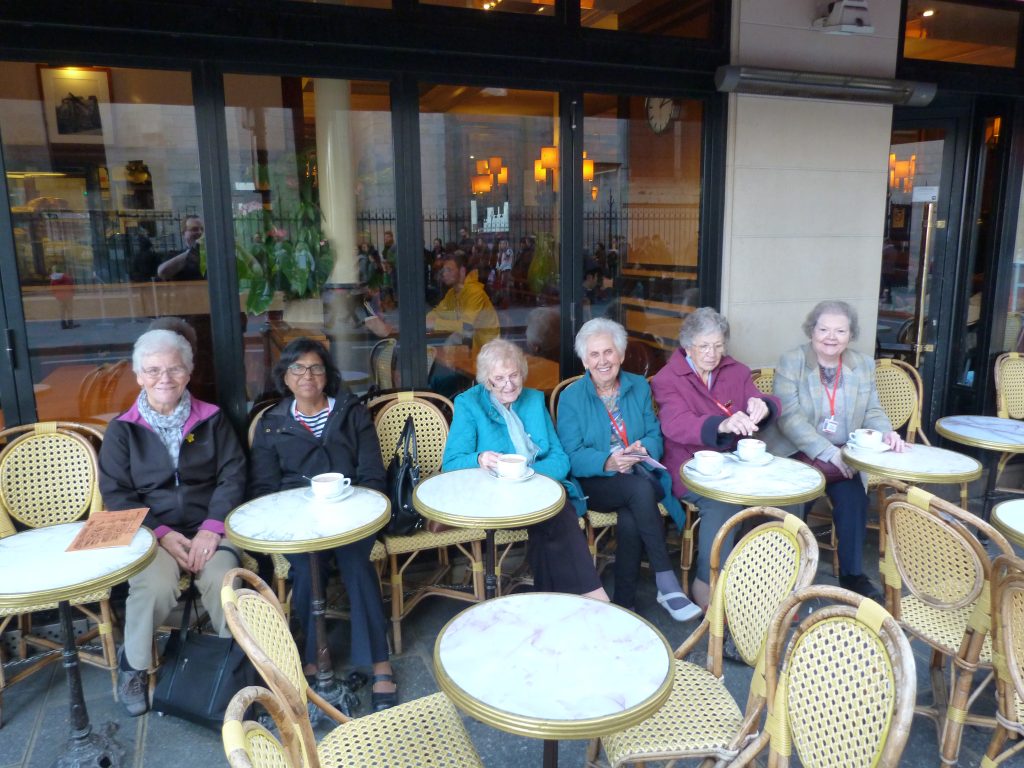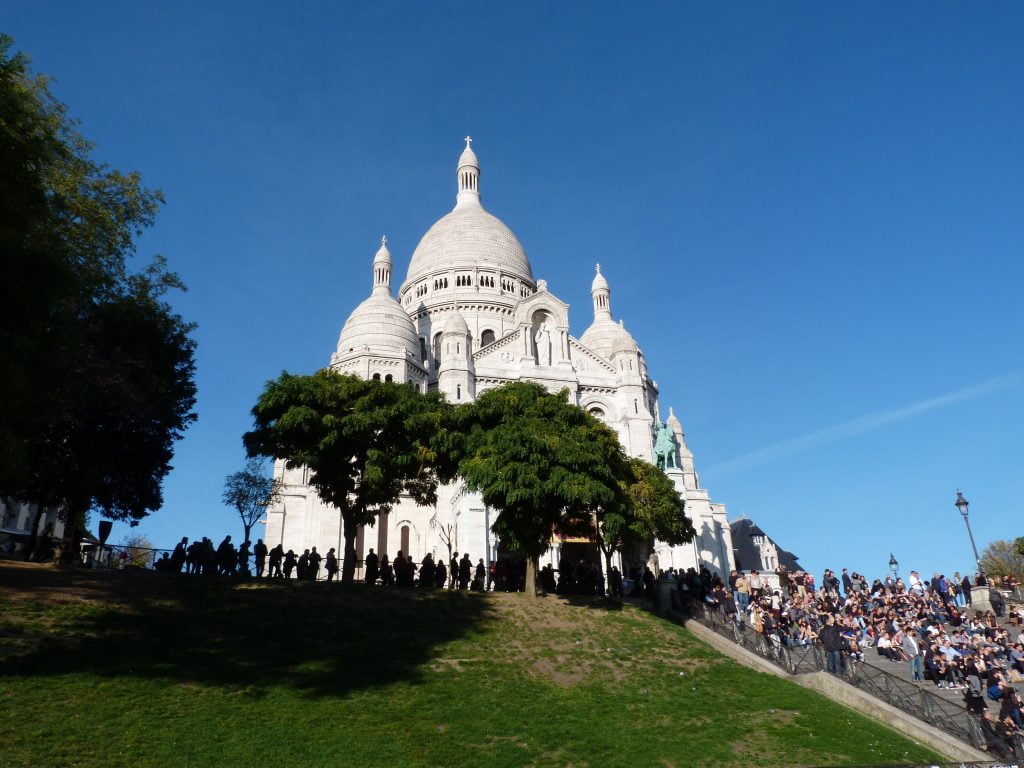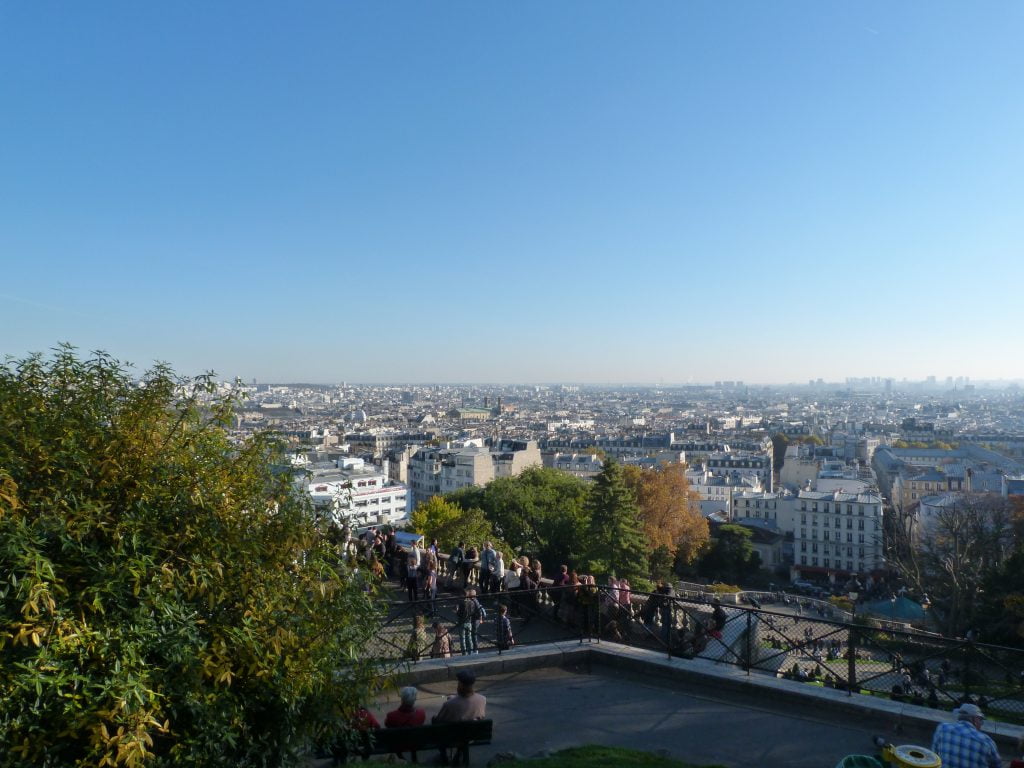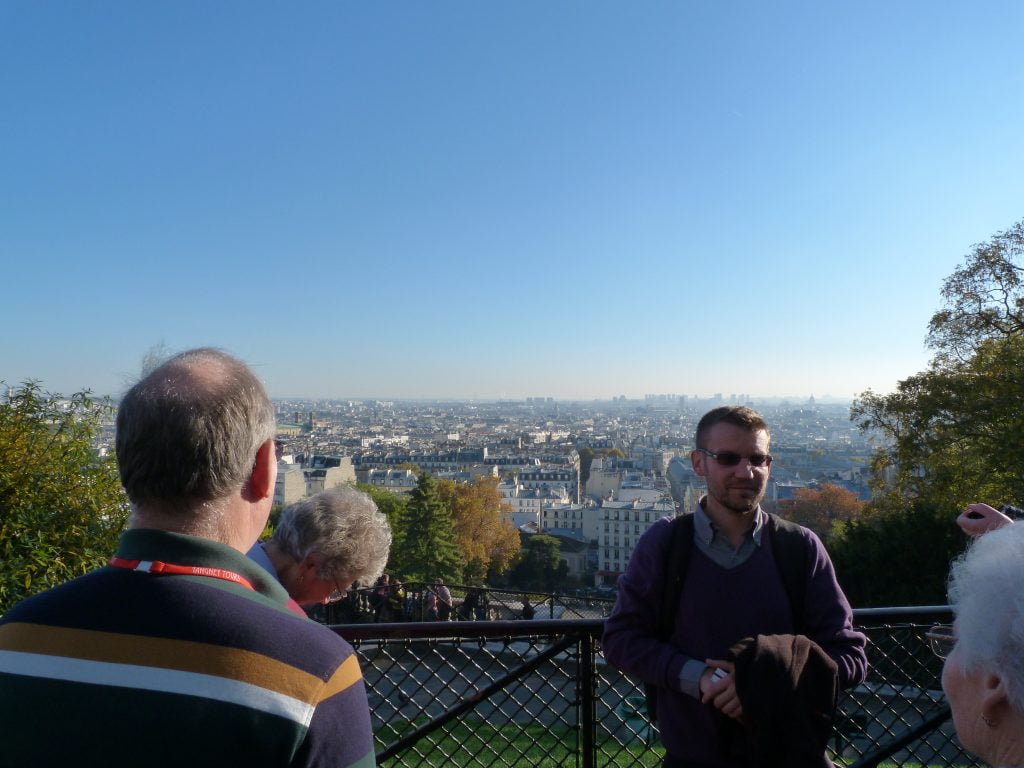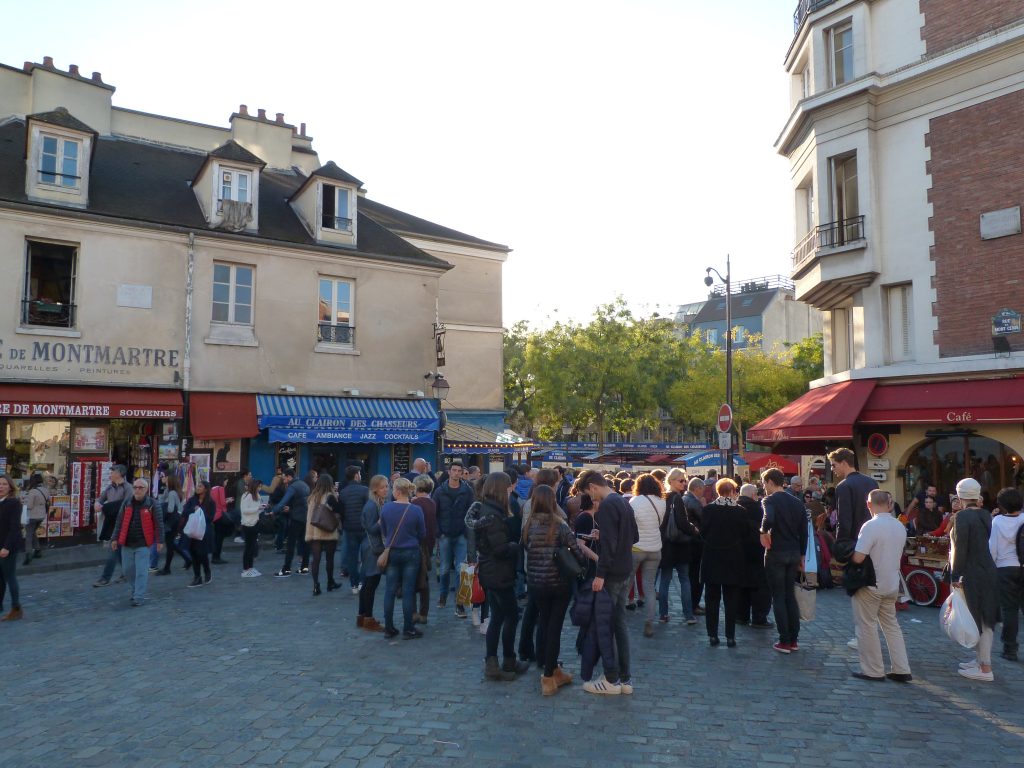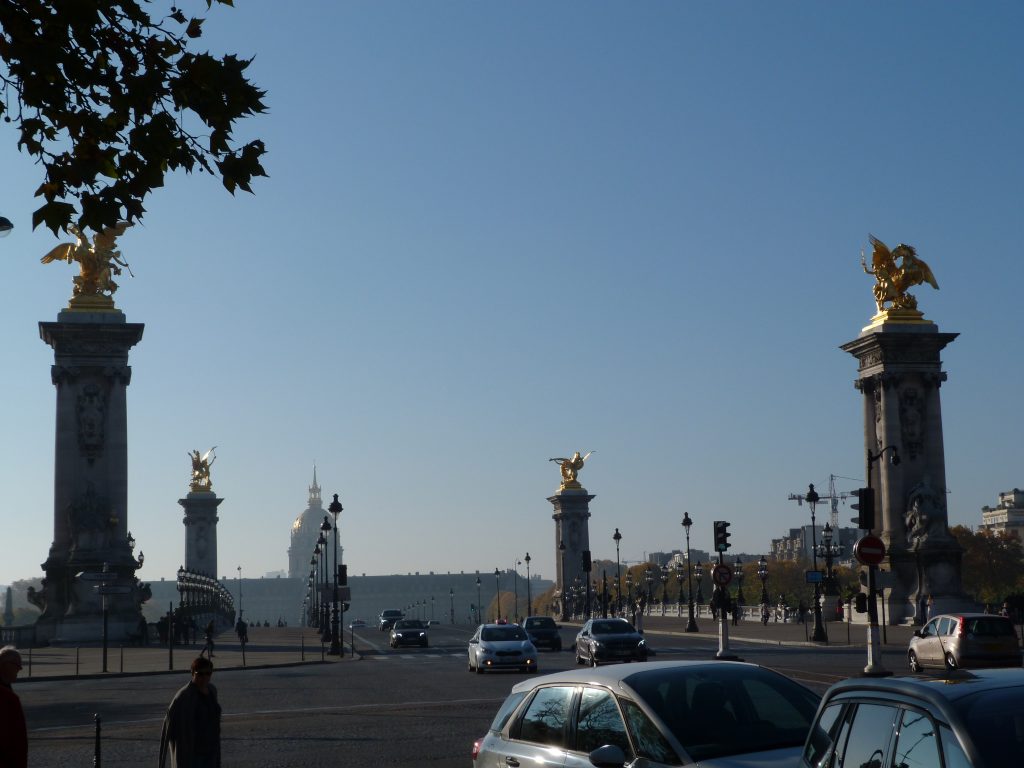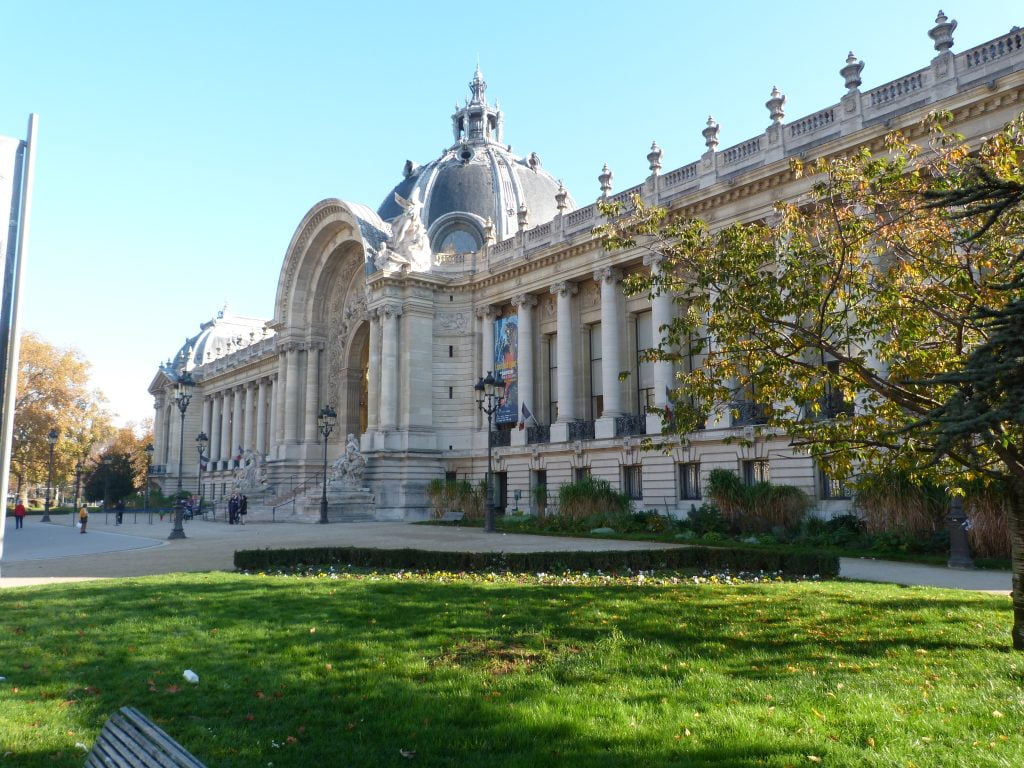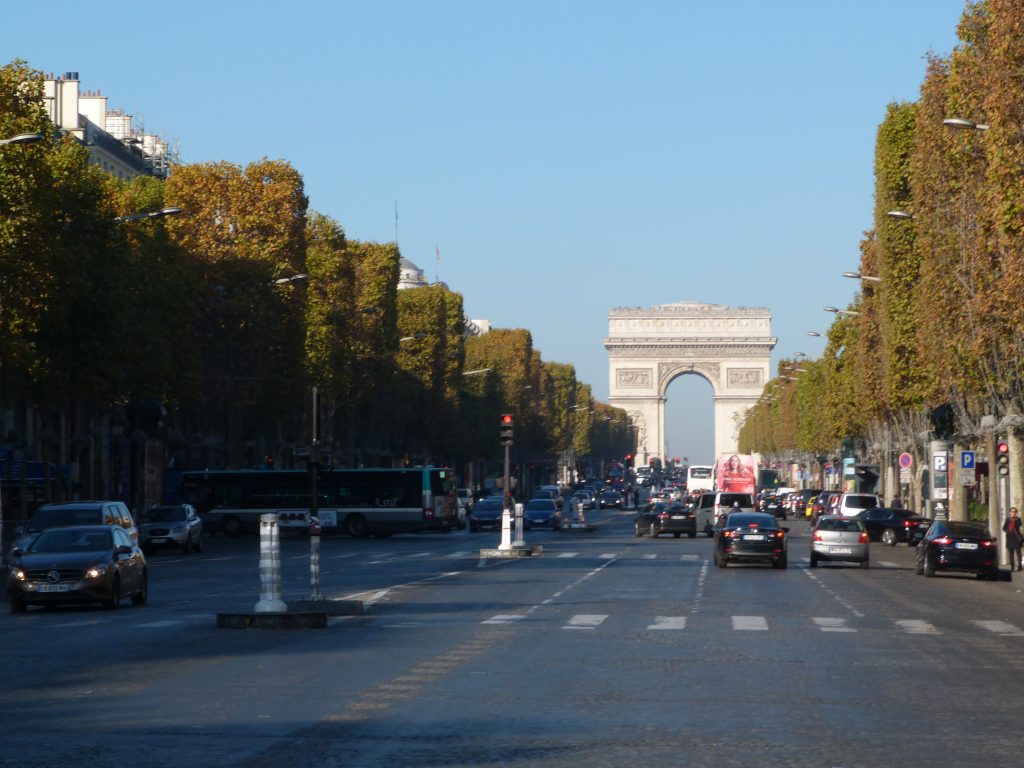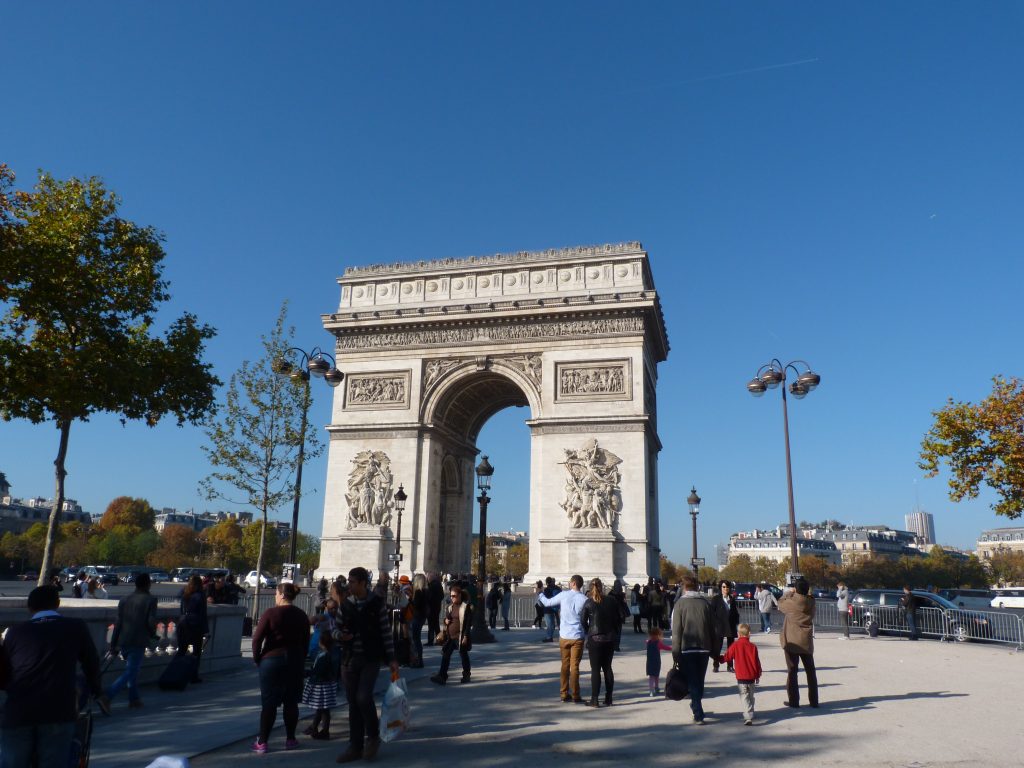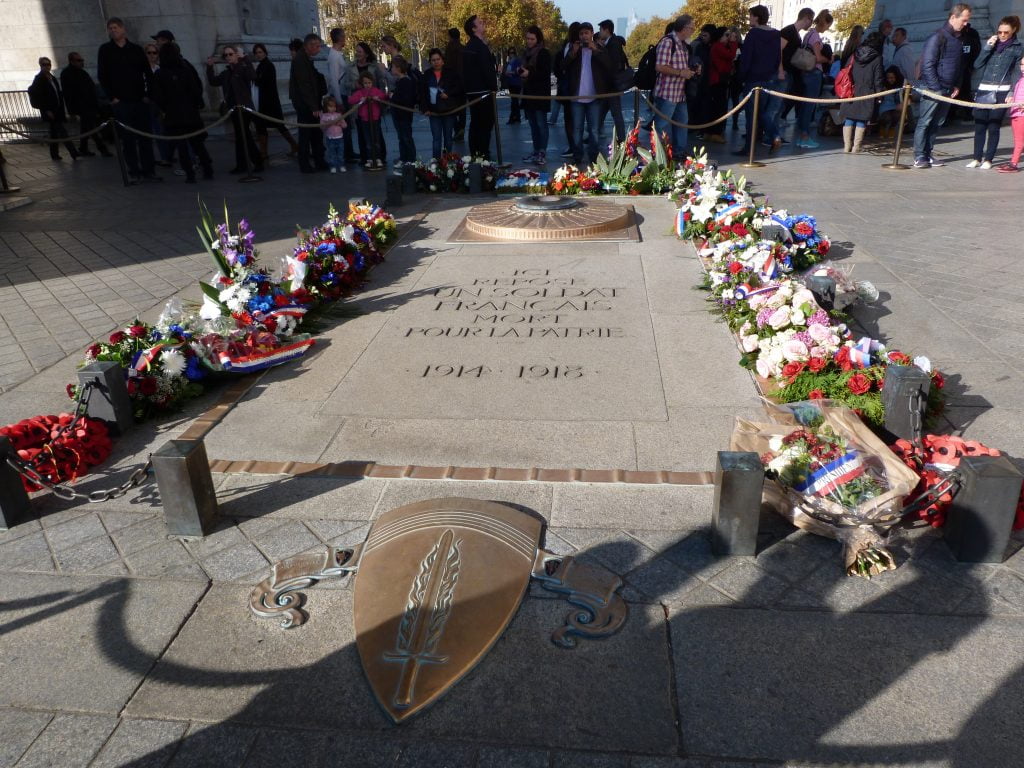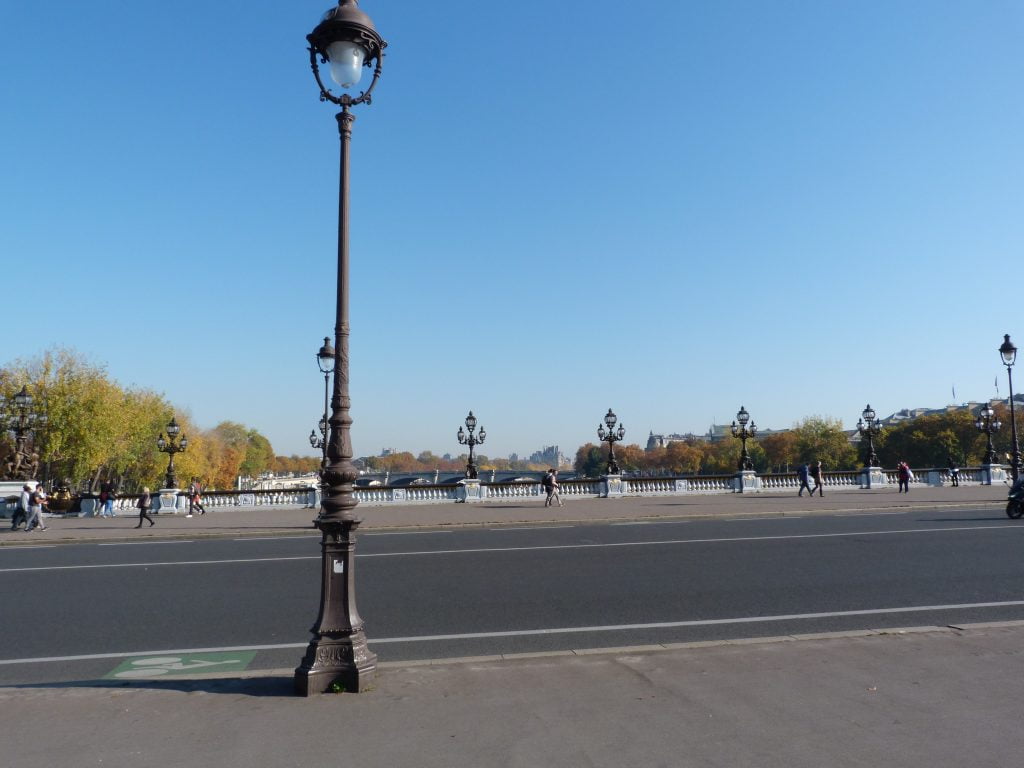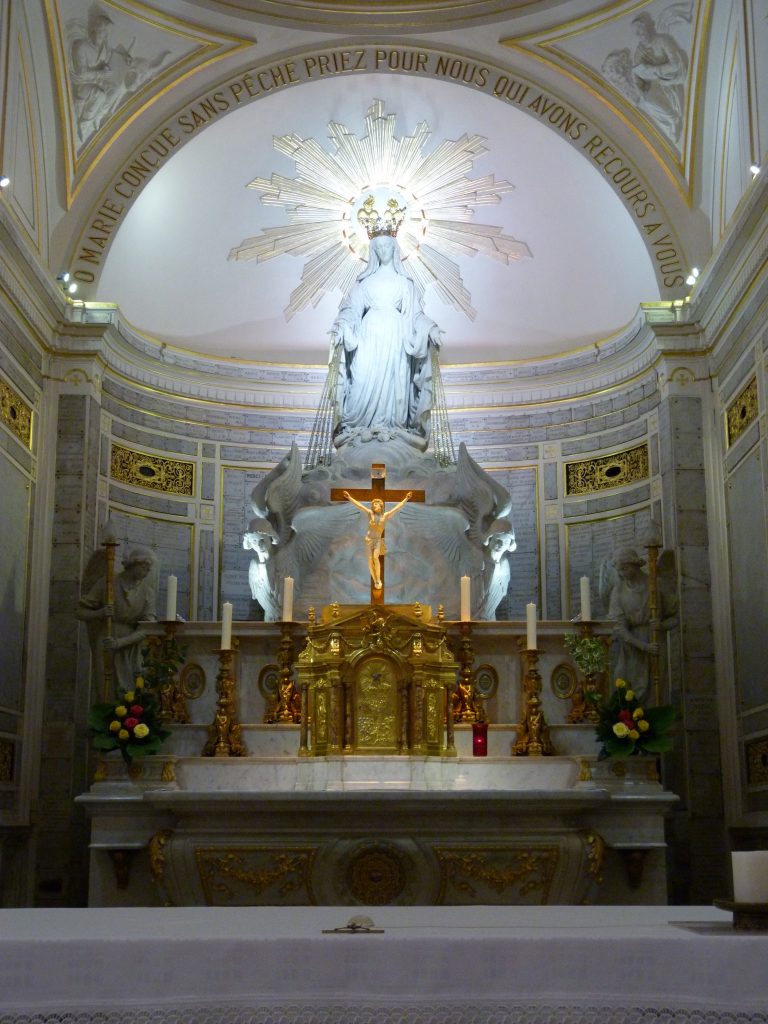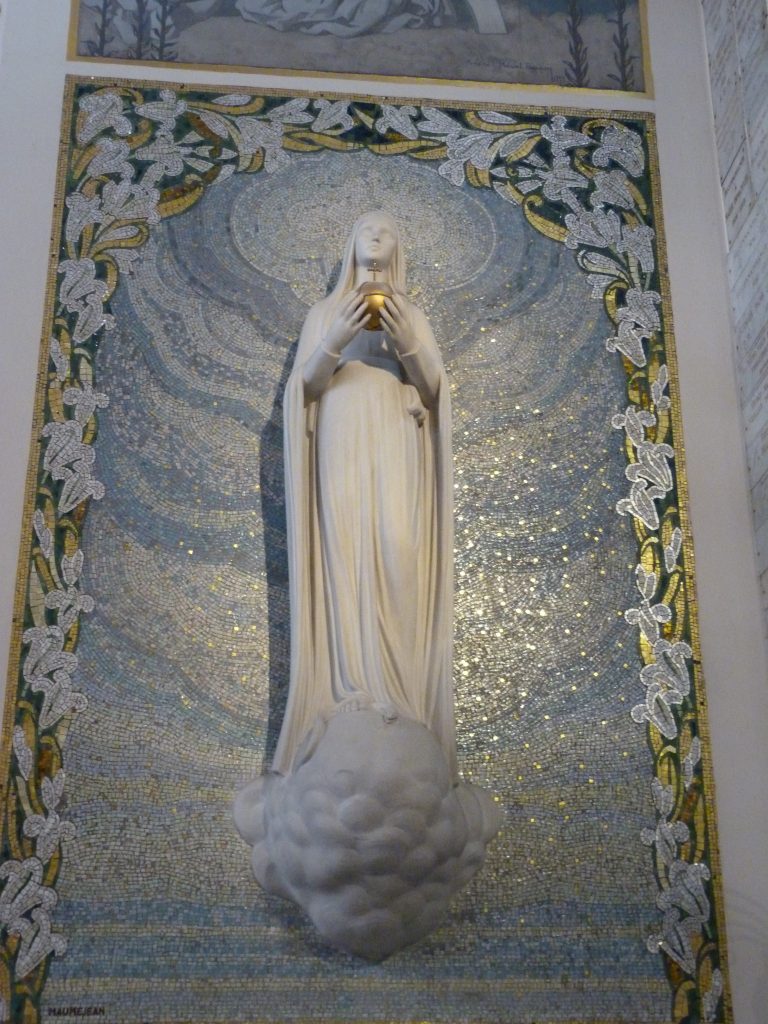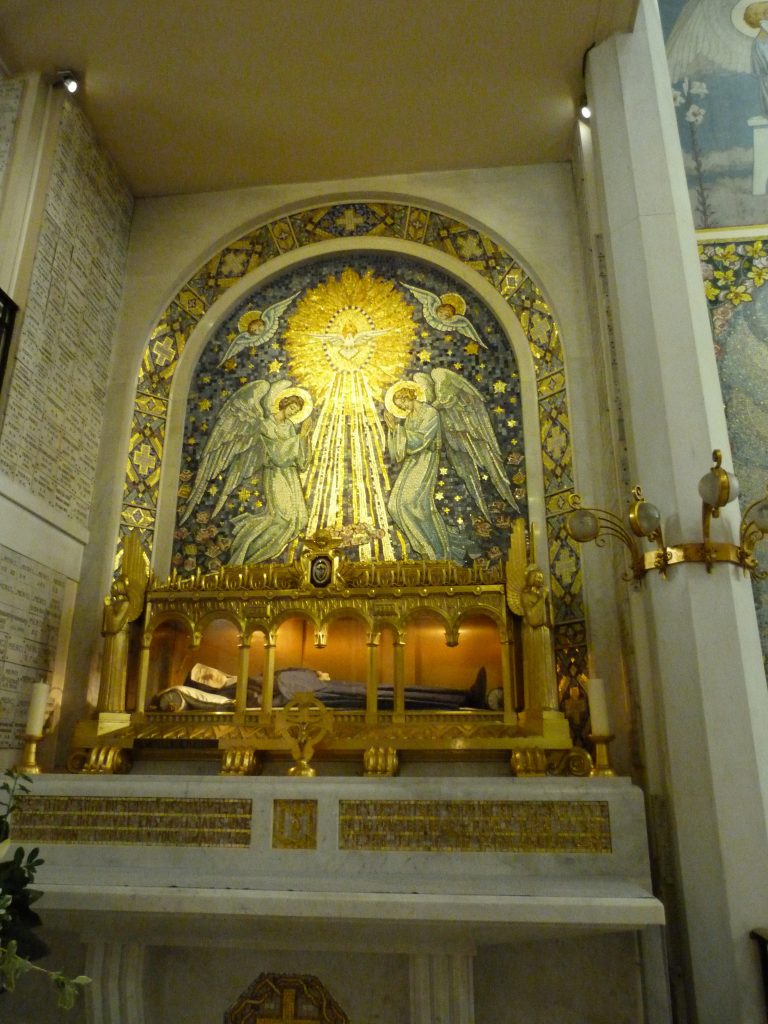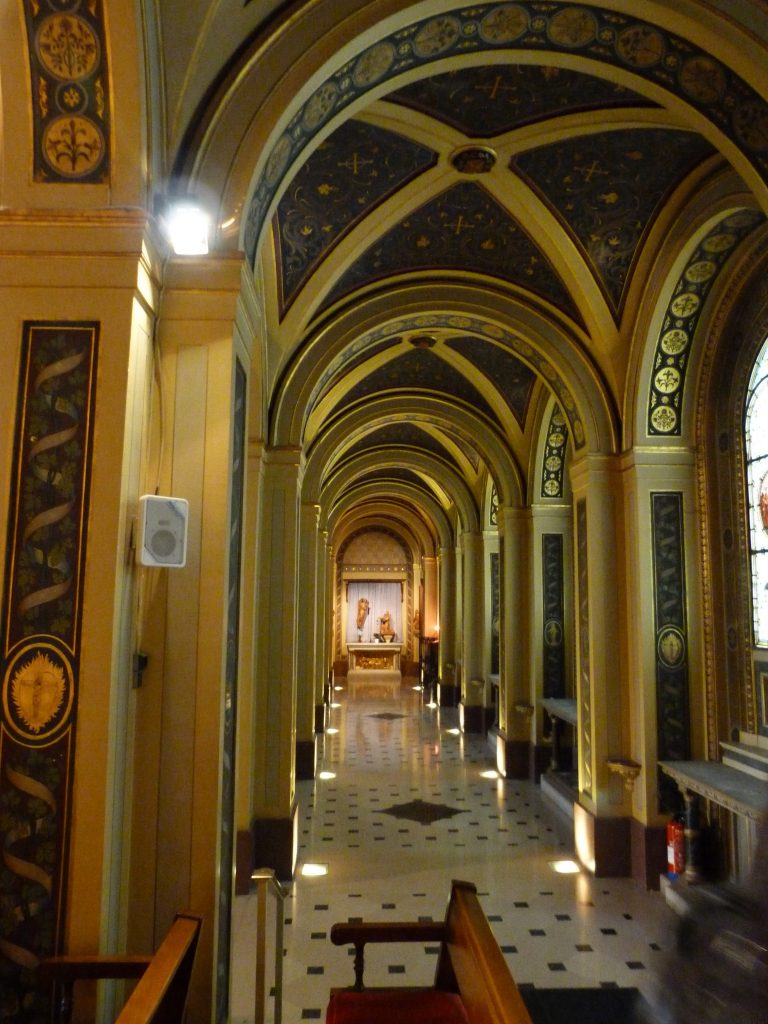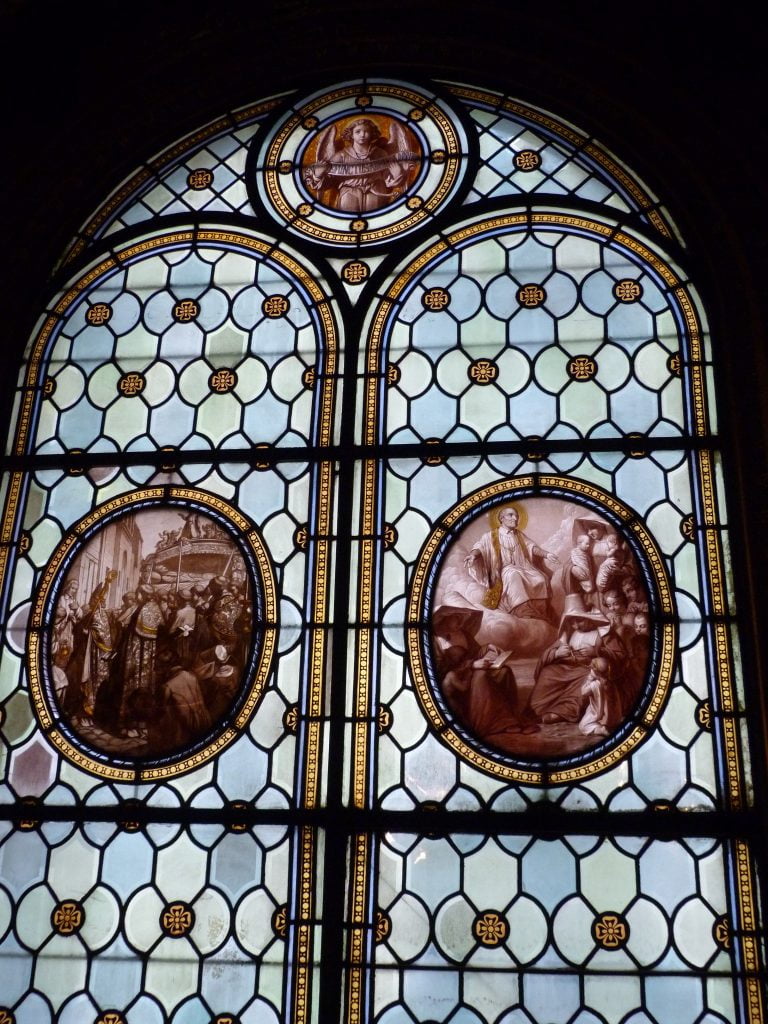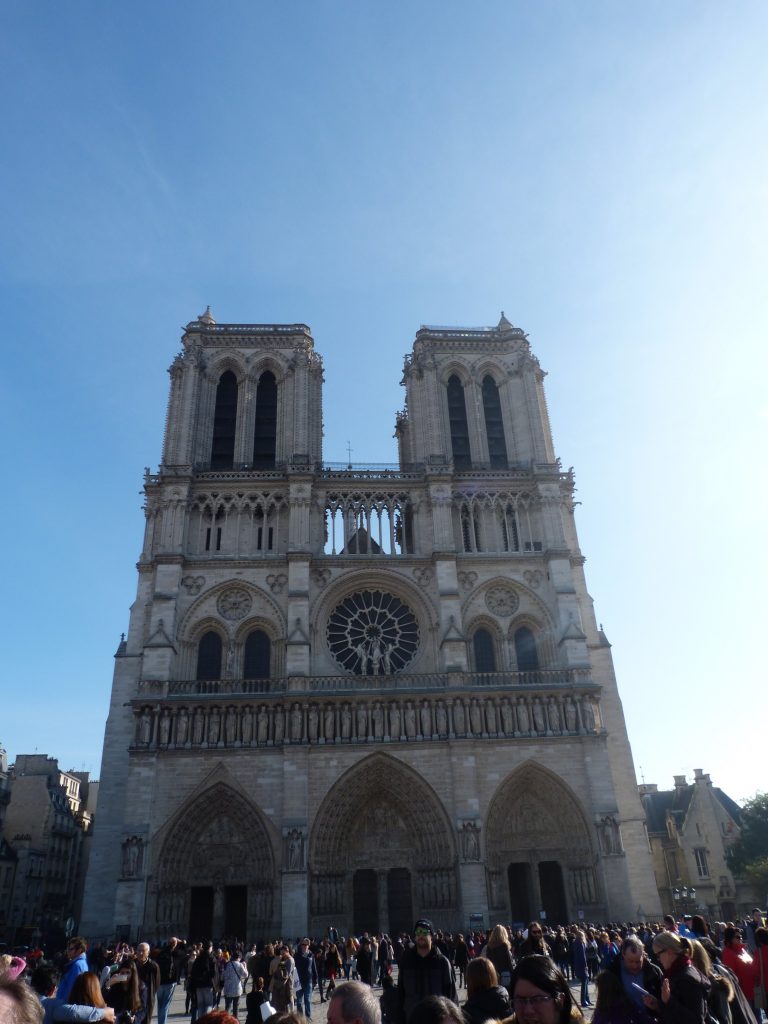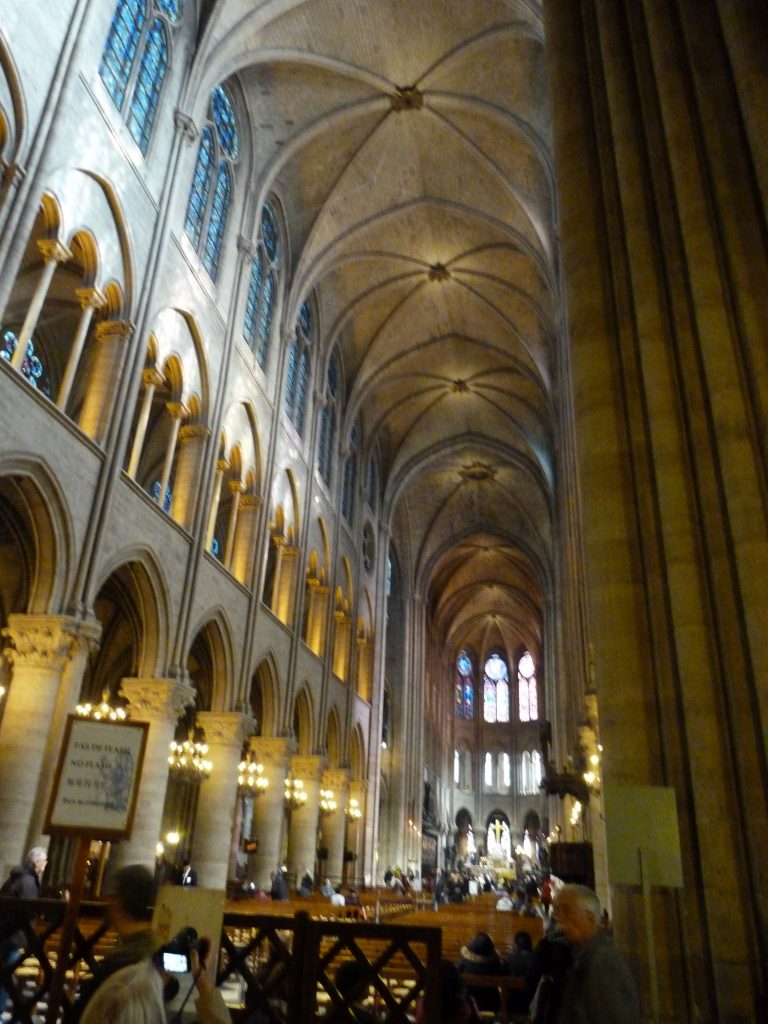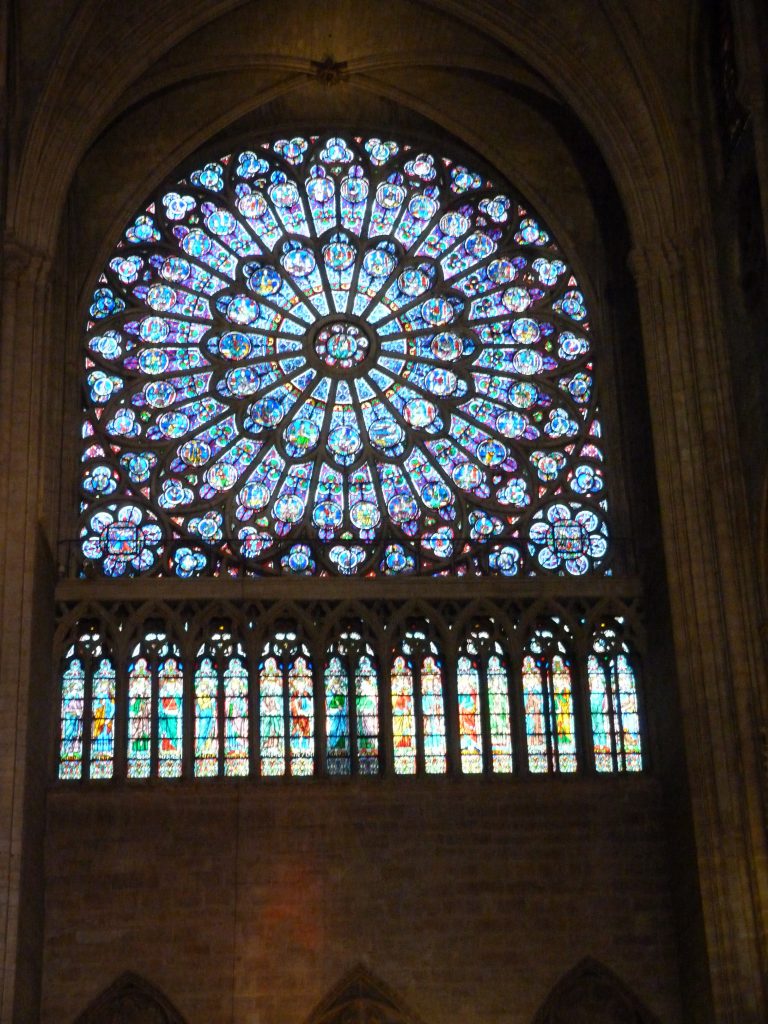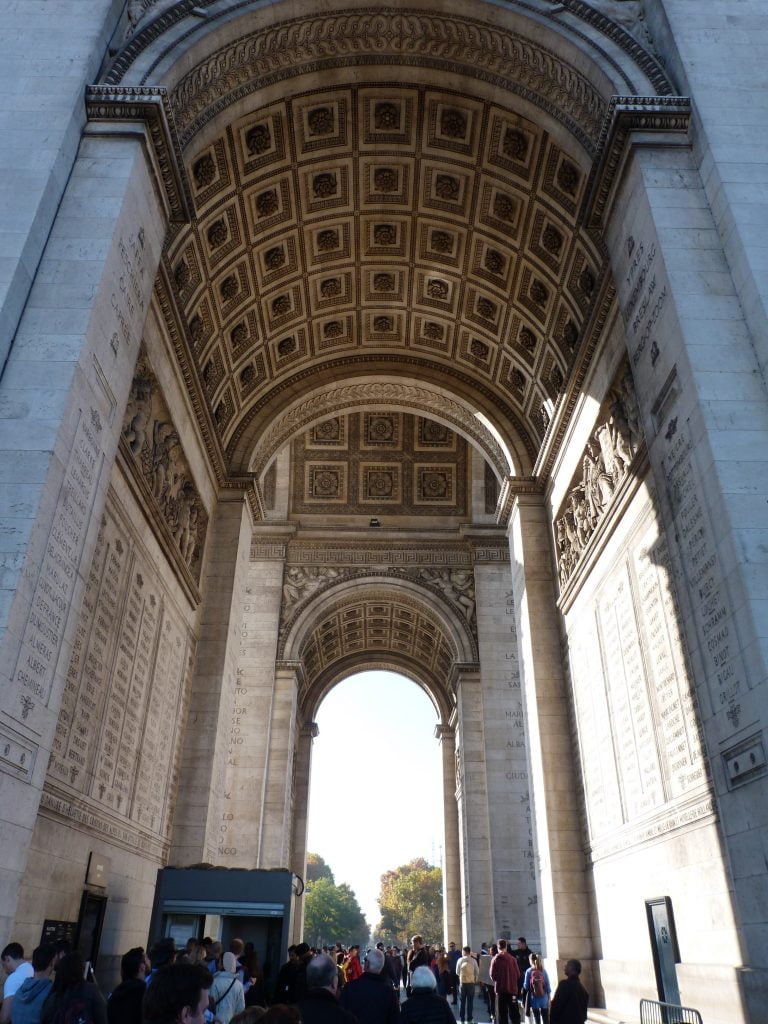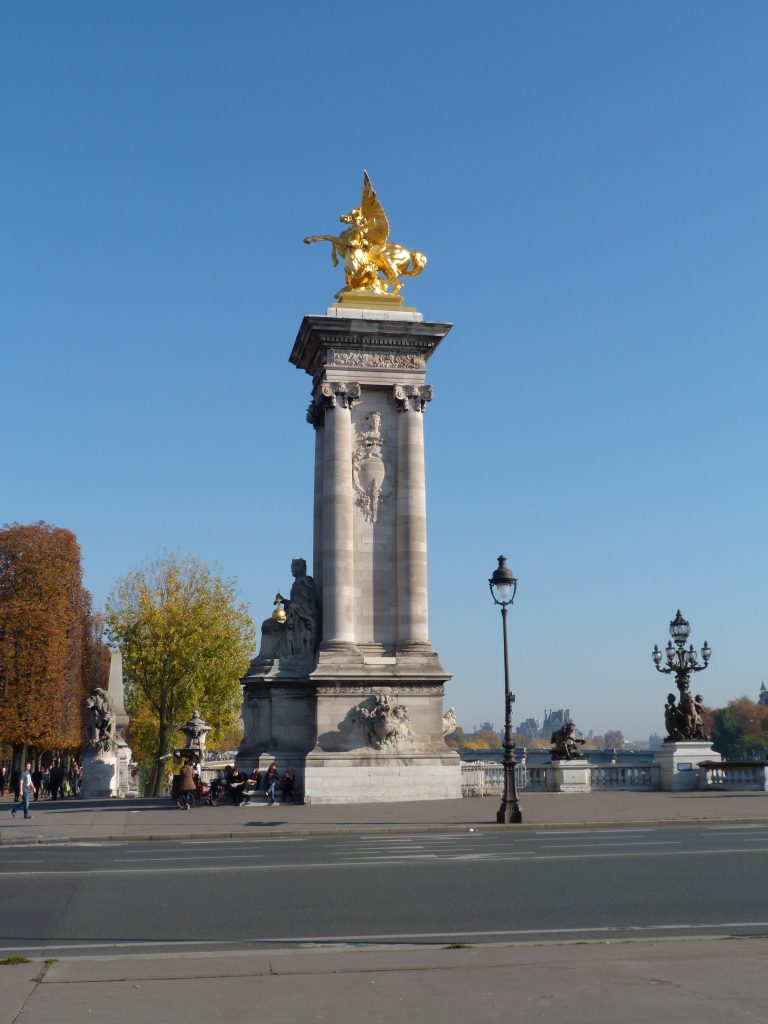Parish Pilgrimage to Paris
30th October – 1st November 2015
It would be nice to say that the morning of Friday 30th October dawned bright and sunny in preparation for our pilgrimage: it didn’t. It was dark and pouring with rain as we boarded the coach outside church at 6.30am. However, it may have been dark and dismal outside, but nothing was going to dampen the spirits of the 21 pilgrims who were full of anticipation of a great weekend.
We were scheduled to sail from Dover at 10.15am, but having had a great journey down to the south coast, praying Morning Prayer of the Church en route, we managed to board an earlier ferry at 9.20am. Getting to France a whole hour ahead of schedule meant we could stop for a proper lunch break half way to Paris, and this is where we realised the weather was going to do something special for us: not only did we have blue skies and sunshine with not a cloud to be seen, it was hot, really quite hot, and it remained so all weekend (so pleased it was raining in England)!
On reaching Paris we drove to our Mass destination, which was in the Church of the Immaculate Conception. After a beautiful Mass and Evening Prayer of the Church we headed to the hotel where we had plenty of time to beautify ourselves (some needed longer than others here) in time for our evening meal. Although tired after a long day, some stayed up for a while to enjoy a glass or two of the local vino.
Saturday dawned really bright and very warm (hope you don’t think we are “rubbing it in!”) and we met up with Vincent, our tour guide, and set off for our first destination of the day:
Chapel of Our Lady of the Miraculous Medal. The main reason for visiting this church is the connection with our own: the medal of course, and the original statue of Our Lady of the Globe, our statue of which (over our main altar) is copied from. We also celebrated Mass in a chapel within the church and Fr Ed gave Mary and Brian a special blessing in celebration of their 51st wedding anniversary (congratulations both of you). The chapel in the Rue de Bac was built in 1815 and was dedicated to the Sacred Heart of Jesus. In 1830 it was privileged with the extraordinary events of the apparitions of the Blessed Virgin to Sister Catherine Labouré that marked it forever. The full story of this amazing Nun can be read here (PDF download) Catherine Labouré died in peace on December 31, 1876: “I am going to heaven… to see Our Lord, His Mother and Saint Vincent.” In 1933, at the time of her beatification, the vault where she was buried at the chapel in Reuilly was opened. The body of Catherine was found to be intact and was transferred to the Chapel at rue du Bac and placed under the altar of Our Lady of the Globe. The body of Saint Louise de Marillac can also be found in the church who, during a pilgrimage to Chartres in 1644, Saint Louise consecrated the Company of the Daughters of Charity to the Blessed Virgin.
Chapel and Shrine of St Vincent de Paul. The Chapel of Saint Vincent de Paul (95 rue de Sèvres) is the church of the Vincentians, brothers and priests of the Congregation of the Mission. It dates from 1827. The Congregation moved here after having been driven out from their previous installations by the Revolution. Vincent de Paul (1581-1660) is venerated as a saint by the Catholic and the Anglican Churches. His younger years included that he was taken captive by Turkish pirates and spent two years in Tunis in slavery, escaped, later worked as chaplain to Marguerite de Valois (La Reine Margot)… In 1625 he founded the Congregation of the Mission, better known as Vincentians or Lazarists (related to the “Saint Lazare Enclosure” in Paris where it all started, where Vincent lived the last 30 years of his life and where the congregation remained until, as said above, driven out by the Revolution). The Lazarists are today present in some 80 countries. Vincent was, and still is, a “popular” saint, renowned for compassion, humility and generosity. Later, the Society of Saint Vincent de Paul was created, dedicated to tackling poverty and disadvantage by providing direct practical assistance to anyone in need, today present in some 130 countries and with about a million members, including non-Catholics. In Paris, many churches are related to Vincent’s activities, including the Church of Saint Vincent de Paul close to where the “Saint Lazare Enclosure” was situated.
A richly adorned silver shrine contains the body of Saint Vincent de Paul (created by J-P-C Odiot , previously “jeweller” of the Napoleon’s court). On the skeleton, face and hands have been redesigned and Vincent seems to rest quietly (although Vincent’s body remained incorrupt for many years after his death, it did eventually become corrupt, so his remains are interred within the man made body in the shrine).
Notre Dame Cathedral. Notre Dame or Our Lady of Paris is located on the eastern half of the Île de la Cité in the fourth arrondissement of Paris. The cathedral is widely considered to be one of the finest examples of French Gothic architecture, and it is among the largest and most well-known church buildings in the world. As the cathedral of the Archdiocese of Paris, Notre-Dame is the parish that contains the cathedra of the Archbishop of Paris.
Sacré-Cœur Basilica. The Basilica of the Sacred Heart of Paris, commonly known as Sacré-Cœur Basilica is located at the summit of the butte Montmartre, the highest point in the city. From the dawn of time, Montmartre has been a place of worship: from the Druids of ancient Gaul, through the Romans with their temples dedicated to Mars and Mercury, to the Church of Saint Peter, the oldest in Paris, rebuilt in the 12th century next to the Royal Abbey of Montmartre by Louis VI and his wife Adélaïde de Savoie… Finally, the Basilica of the Sacré-Cœur, erected at the end of the 19th century. The Sacré-Cœur Basilica was designed by Paul Abadie. Construction began in 1875 and was finished in 1914. It was consecrated after the end of World War I in 1919.
On Sunday, after celebrating Mass in the Eglise Notre-Dame de Boulogne, we transferred to the centre of Paris and we have four and a half hours free time in the Place de la Concorde and the Champs-Élysées area. Leaving at 2.30pm local time, we travelled back to Calais and again, managing to get an earlier ferry, arrived back in Tolworth at around 9pm.
(As an aside, we had slightly less singing this pilgrimage than we are used to due to the fact that our expert singer was not able to join us. Believing she had something more important to be doing than join us on pilgrimage, we were surprised to find her moonlighting in a Paris Theatre on the Champs-Élysées. Don’t take my word for it – the picture of her bill board outside of the theatre (below) is all the proof you need).
It was an amazing weekend with beautiful liturgies (thanks Fr Ed), amazing churches and basilicas, history, prayer, laughter and social, and we all look back very fondly on a very successful pilgrimage.
Andrew Richardson
